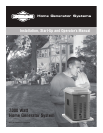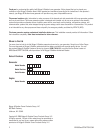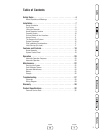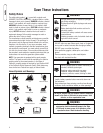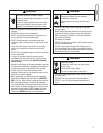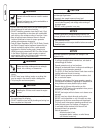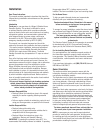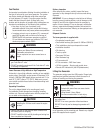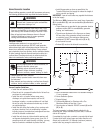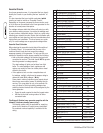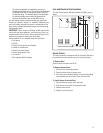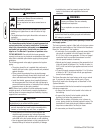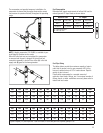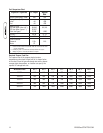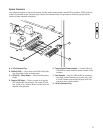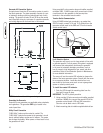
7
Installation
Save These Instructions
This manual contains important instructions that should be
followed during installation and maintenance of the generator
and battery.
Introduction
Thank you for your purchase of a Briggs & Stratton Home
Generator System. This product is intended for use as
an optional standby system which provides an alternate
source of electric power and to serve loads such as heating,
refrigeration systems, and communication systems that,
when stopped during any power outage, could cause
discomfort or the like. This product does not qualify for
emergency standby as defined by NFPA 70 (NEC).
This manual is an important document and should be
retained by the owner after installation has been completed.
This manual contains installation, startup and adjustment
instructions for a Home Standby Generator that supplies
120/240 Volt, single phase, 60Hz devices. The Home
Standby Generator may be operated on LP vapor or natural
gas fuel.
Every effort has been made to ensure that the information
in this manual is both accurate and current. However, the
manufacturer reserves the right to change, alter or otherwise
improve the generator at any time without prior notice.
Briggs & Stratton has made every effort to provide for a
safe, streamlined and cost-effective installation. Because
each installation is unique, it is impossible to know of and
advise the trade of all conceivable procedures and methods
by which installation might be achieved. Neither could we
know of possible hazards and/or the results of each method
or procedure. For these reasons,
Only current licensed electrical and plumbing contractors
should attempt Home Standby Generator installations.
Installations must strictly comply with all applicable
codes, industry standards and regulations.
Customer Responsibilities
• Read and follow the instructions given in this manual,
especially the section regarding selecting essential
circuits.
• Follow a regular schedule in maintaining, caring for and
using your home generator, as specified in this manual.
Installer Responsibilities
• Read and observe the safety rules.
• Install only an UL approved transfer switches that is
compatible with the home generator.
• Read and follow the instructions given in this
Installation, Start-up and Operator’s Manual.
IMPORTANT: If operating the generator below 40°F, it is
recommended that a battery warmer be installed. If operating
the generator below 32°F, a battery warmer must be
installed. This item is available at your local servicing dealer.
For the Home Owner:
To help you make informed choices and communicate
effectively with your installation contractor(s),
Read and understand Owner Orientation in this manual
before contracting or starting your home generator
installation.
To arrange for proper installation, contact the store at which
you purchased your Briggs & Stratton home generator, your
dealer, a licensed electrician or your utility power provider.
The home generator warranty is VOID unless the
system is installed by licensed electrical and plumbing
professionals.
The Emission Control System for this generator is warranted
for standards set by the U.S. Environmental Protection
Agency and by the California Air Resources Board (CARB).
For the Installing Dealer/Contractor:
For most applications, the Installation manual contains all
the information required to properly install and start the
home generator. This Operator’s Manual describes essential
circuit selection, routine operation and owner maintenance
procedures.
If you need more information, call (800) 743-4115, between
8:00 AM and 5:00 PM CT.
Owner Orientation
This section provides home generator owners with the
information necessary to achieve the most satisfactory and
cost effective installation possible.
The illustrations are for typical circumstances and are meant
to familiarize you with the installation options available with
your home generator. A thorough understanding of these
options will provide fundamental control over the cost of
your installation, as well as ensure your final satisfaction and
security.
Federal and local codes, appearance, noise levels, fuel types,
and distances are the factors that must be considered when
negotiating with an installation professional. Remember
that as the distance from the existing electrical service and
gaseous fuel supply increases, and the number of 90 degree
bends in the fuel supply increases; equal compensations
in piping and wiring materials must be allowed for. This
is necessary to comply with local codes and overcome
electrical voltage drops and gaseous fuel pressure drops.
The factors mentioned above will have a direct affect on
the overall price of your home generator installation.
NOTE: In some areas you may need to acquire electrical
permits for installing the home generator, building permits
for installing gas lines, and permits for noise allowances.
Your installer should check your local codes AND obtain the
permits before installing the system.



